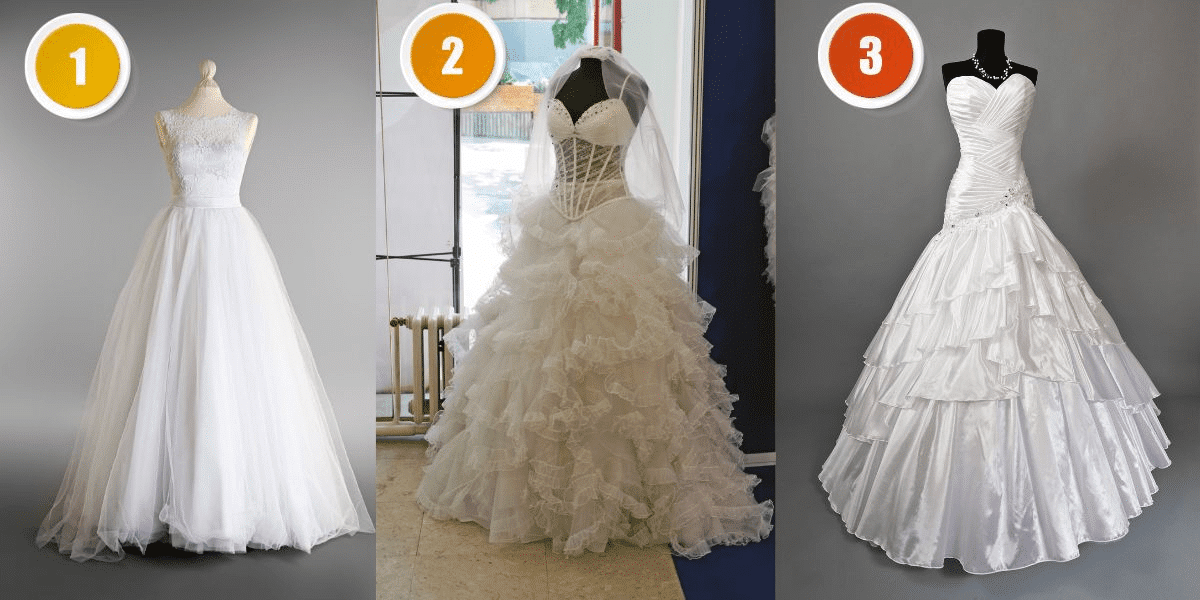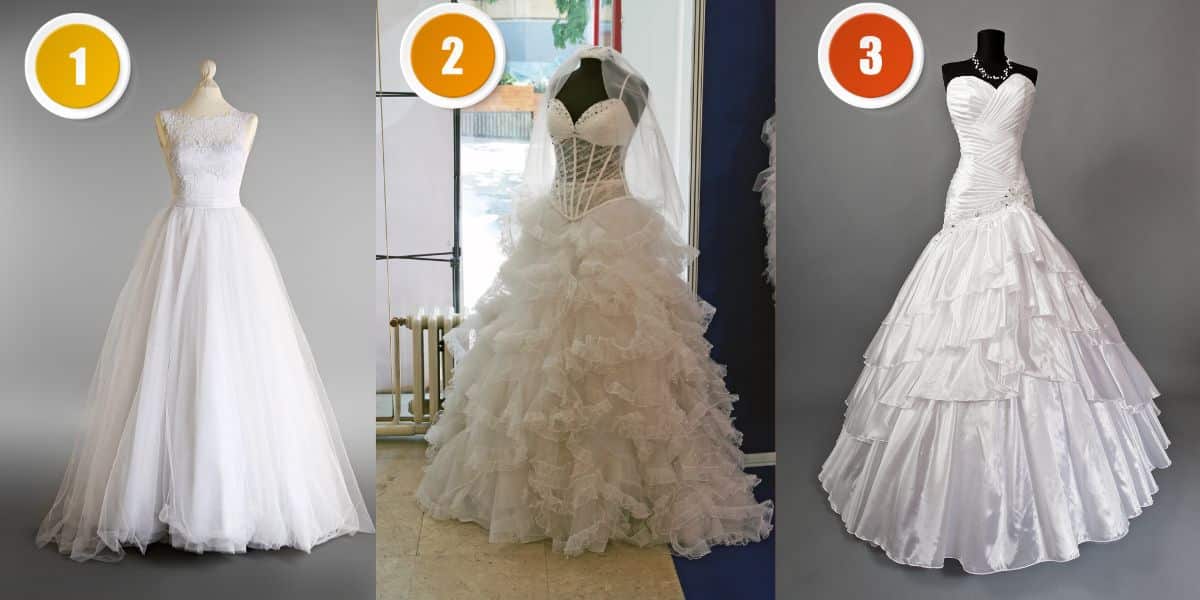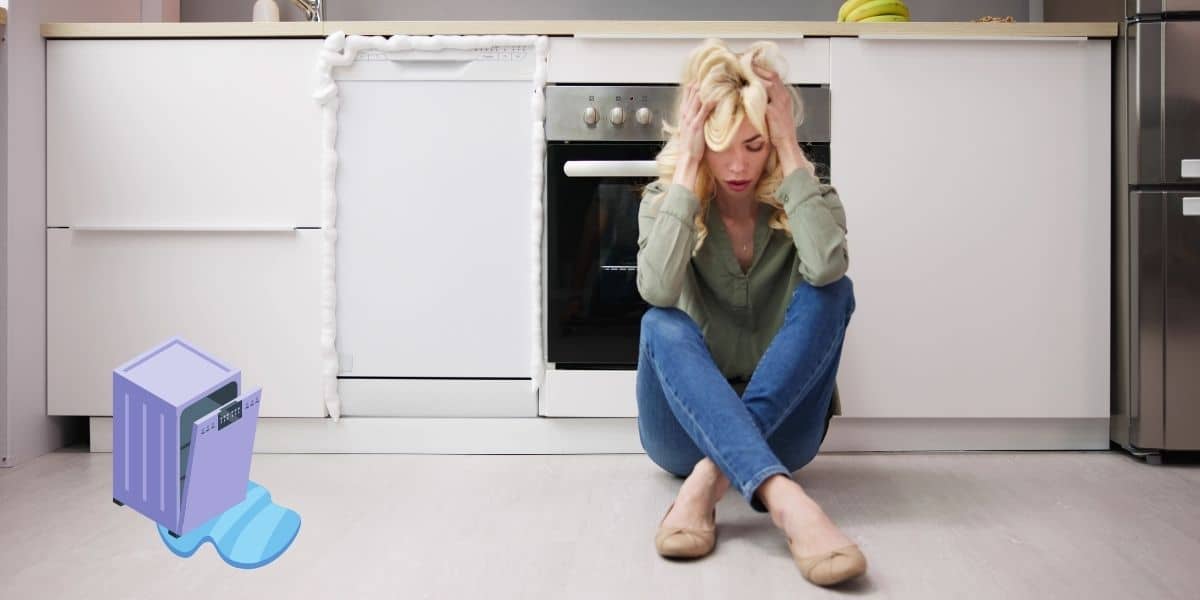Who doesn’t love a good personality test? They’re fun, intriguing, and offer a fascinating insight into our personalities. Whether it’s discovering your true Hogwarts house or finding out what type of bread best represents your personality, these quizzes offer a light-hearted and enjoyable way to learn more about yourself.
Our latest personality test takes a slightly different approach. Instead of asking questions about your likes and dislikes or how you react in certain situations, this test asks you to choose your favourite wedding dress. The one that resonates with you the most will reveal unique aspects of your personality.
So, get ready to discover whether you’re soft and sentimental, confident and sophisticated, or have a daring, independent spirit. Remember to go with your gut reaction – don’t overthink it! Let’s dive right in.

Dress 1 – the soft and sentimental soul
If you were drawn to image 1, it indicates that you have a soft and sentimental nature. You are someone who cherishes memories and holds on to things that have a special significance in your life. You probably have a box full of keepsakes from important events or milestones in your life.
People love being around you because of your kind-hearted nature. You’re empathetic, sensitive, and genuinely care about others’ feelings. Your ability to understand and connect with people on a deeper level is truly special.
Dress 2 – the confident sophisticate
If image 2 was the one that caught your eye, it suggests that you are confident and sophisticated. You know exactly who you are, what you want in life, and aren’t afraid to go after it. You’re not one to shy away from challenges; instead, you embrace them head-on.
You also have a keen eye for elegance and style. Your sophisticated nature transcends beyond your wardrobe, reflecting in your tastes, interests, and the company you keep. You’re someone who appreciates the finer things in life.
Dress 3 – the daring independent
Choosing image 3 points to a daring, independent spirit. You’re not afraid to stand out from the crowd or go against the grain. You value your freedom and independence above all else. You’re adventurous, always ready to try new things and explore new places.
You have a brave heart and aren’t afraid to voice your opinions or stand up for what you believe in. Your daring nature and fierce individuality make you a force to be reckoned with.
Thank you for reading
We hope you enjoyed this fun personality test! It’s always interesting to see what our choices can reveal about us. Remember, this is just for fun and doesn’t define who you are as an individual.
If you enjoyed this quiz and found it insightful, please feel free to share it with your friends. Let’s see what their wedding dress choices reveal about their personalities!




